MONDAY, DECEMBER 20, 2021. BY STAN GRANT, VITICULTURIST.
Given the demands and complexity of vineyard management, it is easy to become lost in the day-to-day details of specific tasks and forget the reasons for our efforts. This is often the case for vineyard soil management. Many times, soil management is reduced to in-season irrigations with periodic fertilizer applications. While this approach may meet some short-term vine needs, it is far from optimum. Otherwise, large variations in vine growth, fruit production, and grape ripening within vineyard blocks and between growing seasons would be much less common than they are (Fig. 1).
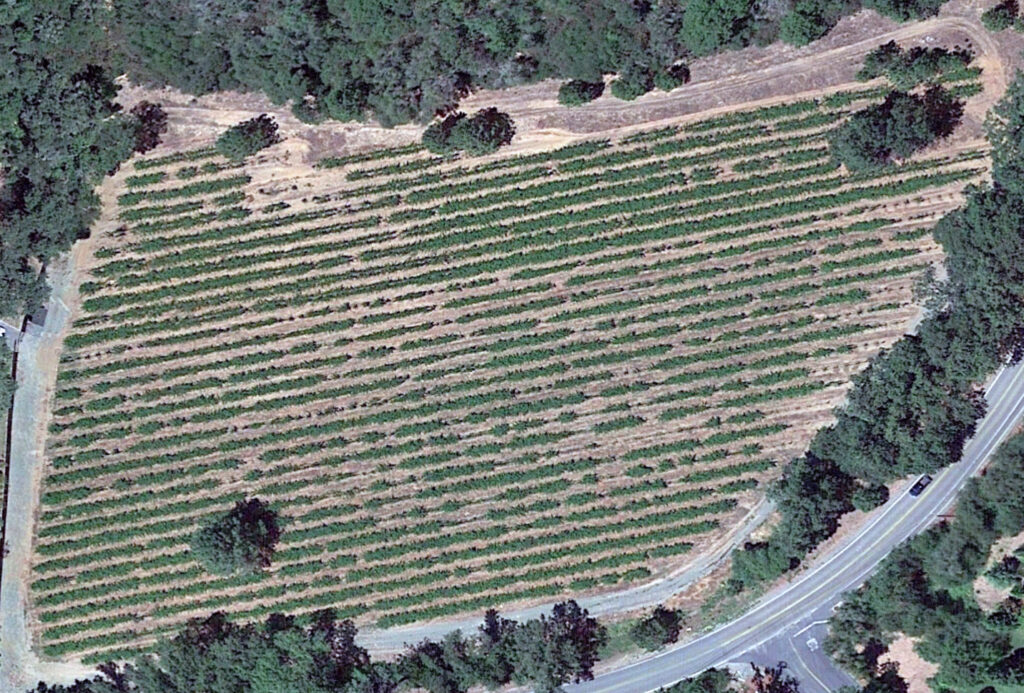
Fig. 1. Root zone variability is a primary cause of vine size and growth variability within vineyards. (Photo source: Google Earth, 2018)
Maintaining a favorable root zone ought to be the primary focus of soil management.
Vines need a soil environment conducive to root extension and function. In addition, roots require access to readily available soil resources to take up in support of grapevine growth and development. Given the dynamic nature of some soil properties, fulfilling these necessities, which are central to root zone function, requires ongoing diligence.
Three soil attributes integrate essential root zone functions. They are soil tilth, soil water holding capacity, and soil fertility.
Soil Tilth
Tilth denotes a soil’s ease of root penetration, as well as ease of tillage (Fig. 2). More broadly, tilth refers to the degree a soil is loose, friable, porous, and permeable to air and water. It is the physical condition of a soil as it relates to plants. Tilth depends on soil texture, organic matter content, and degree of particle aggregation (structure), as well as past management activities.
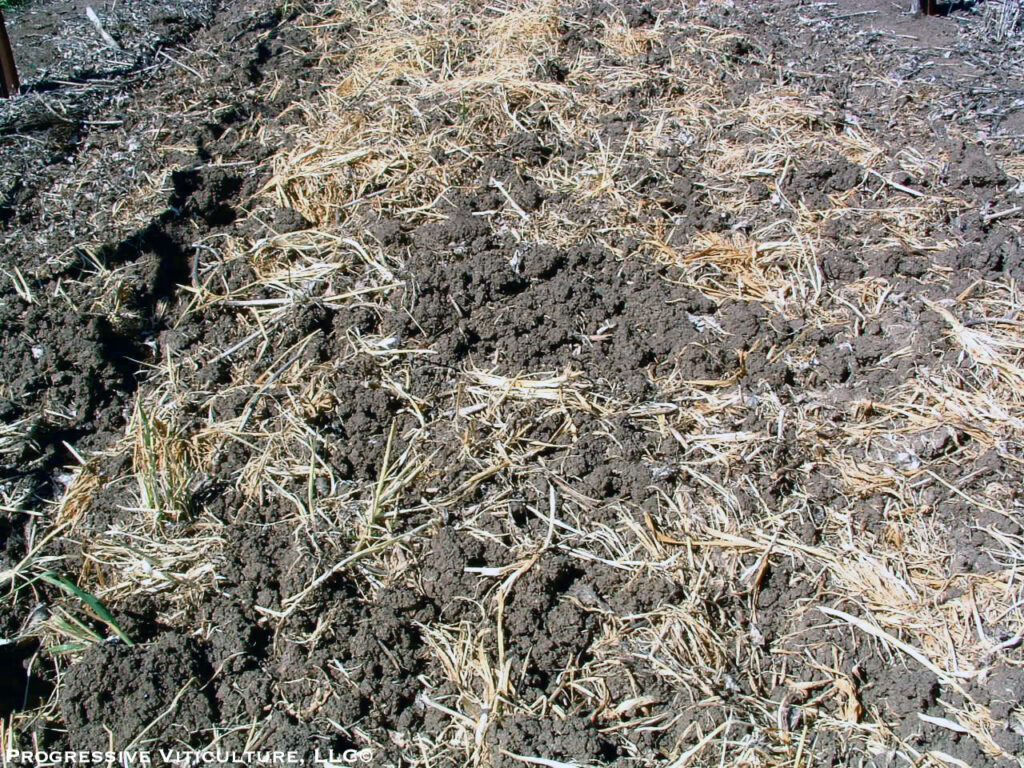
Fig. 2. Aggregation on a soil surface following cultivation is a favorable indicator of soil tilth. (Photo source: Progressive Viticulture©)
Natural forces may compress and compact soils, such as when overlying mineral materials compress subsoil layers into hardpans during soil formation or when rain droplets compress soil surfaces into crusts. Artificial forces may have similar affects on soils, including the downward forces of machinery and irrigation droplets. Regardless of the source, compaction diminishes soil tilth, as does loss of structure and organic matter with excessive cultivation, and loss of exposed topsoil with erosion by water or wind.
While tilth is difficult to quantify, there are ways to gain some sense of it. A visibly friable soil is considered one with good tilth. We can also gain some measure of tilth with a penetrometer in the field or as bulk density analysis of undisturbed soil cores in a laboratory. Look for penetrometer readings well below 300 PSI and bulk density values less than 1.1 to 1.6 g/cm3 for clayey to sandy soils, respectively. Ponding and excessive runoff following a rain indicates poor soil tilth. Root disease and vine decline are also associated with inferior tilth.
Soil Available Water Holding Capacity
Available water holding capacity is a general measure of the soil moisture available to plants. It has two components: root zone volume and the intensity of moisture holding within that volume of soil. The former is a function of root zone depth and the latter is a function of soil texture and organic matter (Fig. 3).
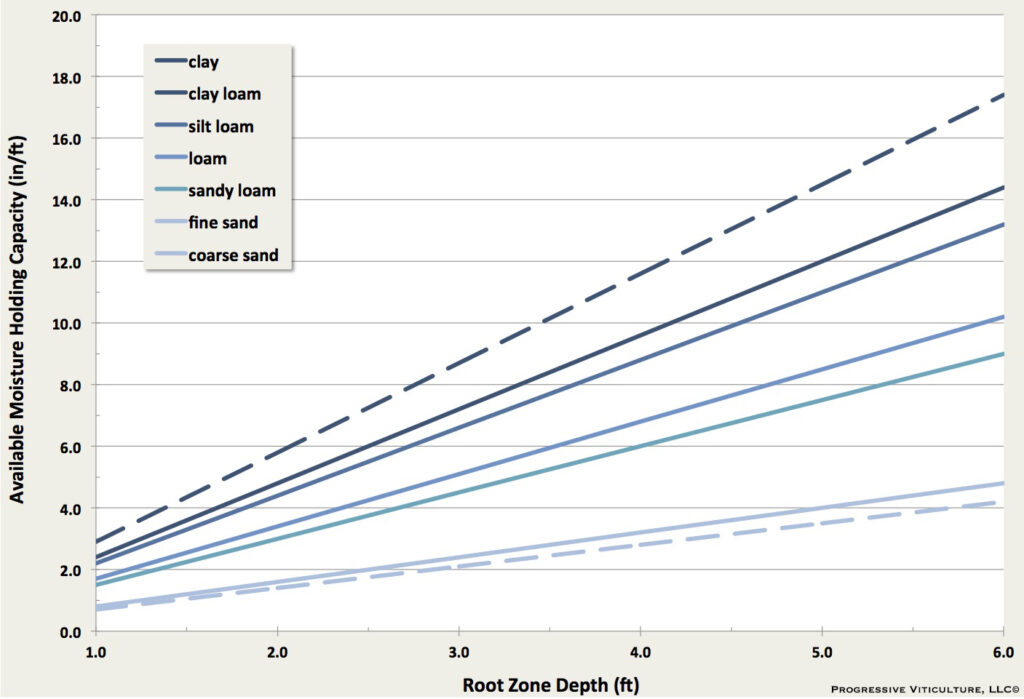
Fig. 3. Available water holding capacity is a function of both root zone depth and texture. (Chart source: Progressive Viticulture©)
Soil scientists define soil moisture holding capacity (intensity) as the difference between field capacity (FC), in which the soil is fully wet and all excess water has drained away, and the permanent wilting point (PWP; arbitrarily set at a dryness value of about -15 bars or -1.5 MPa). Each type of plant, though, has a specific moisture range in which water, oxygen, and root penetration do not limit growth, called the non-limiting water range.
Fortunately, grapevines have some tolerance for drought and are adaptable to a comparatively wide range of available water. They are, however, less tolerant of excessive soil moisture and require ample subsurface drainage for normal growth and development.
While the accurate determination of available water holding capacity within a soil requires laboratory measurements of undisturbed soil cores, approximate values can be ascertained in the field using soil moisture sensing devices. These include automated and remotely accessible sensors that measure soil moisture content or soil moisture tension.
Soil Fertility
Fertility refers to a soil’s capacity to supply mineral nutrients to plant roots. Generally, fairly young soils high in clay and organic matter, and near neutral in pH tend to be the most fertile. Conversely, highly weathered soils, sandy and rocky soils, soils low in organic matter, and soils extreme in pH (acid or alkaline) tend to be low in fertility. In addition to restricted growth and limited yields, vines on low fertility soils often show foliar symptoms of certain mineral nutrient deficiencies. Soil analysis results indicate soil fertility and potential mineral nutrient shortages.
Careful amending and fertilization of low fertility soils can significantly improve their mineral nutrient status and capacity to supply vines. Likewise, satisfactory grapevine productivity is possible on many low fertility soils, so long as they receive supplemental nutrients in readily available forms as needed and the root zone is otherwise favorable (Fig. 4).
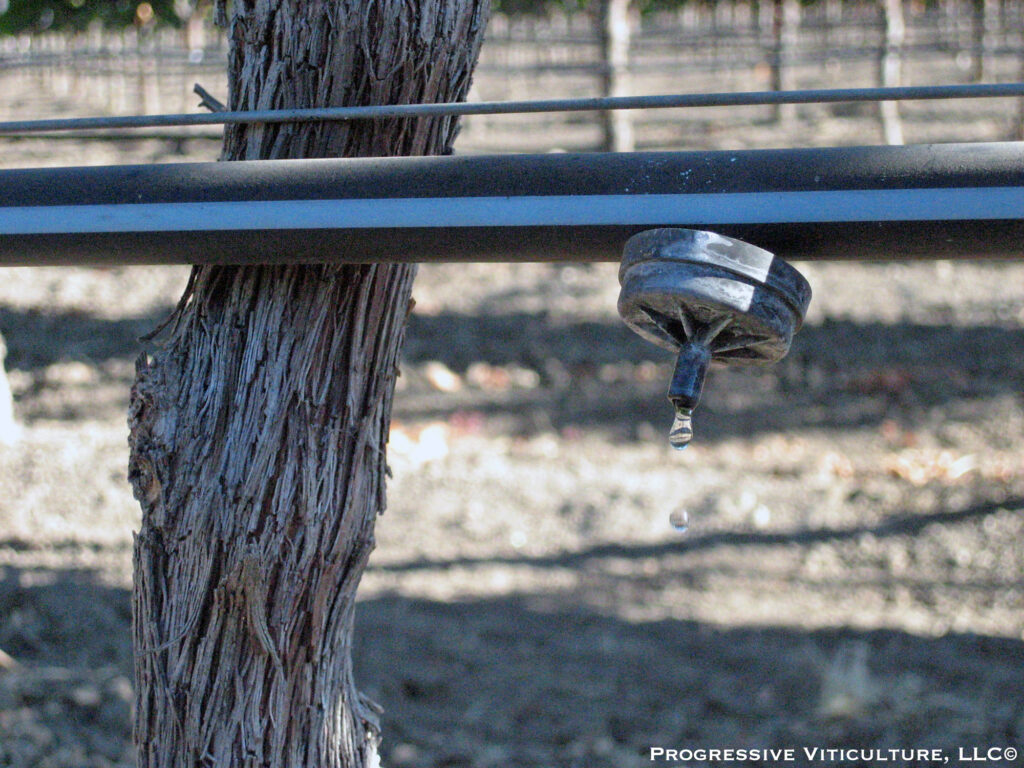
Fig. 4. Drip fertigation: an effective method for applying readily available mineral nutrients as soluble fertilizers. (Photo source: Progressive Viticulture©)
Root Zone Function – the Intersection of Tilth, Water Holding Capacity, and Fertility
The three root zone function attributes – tilth, available water holding capacity, and fertility – are interrelated to varying degrees. For example, diminished tilth restricts water infiltration and movement within root zones, which in turn inhibits the movement of minerals nutrients towards roots. Also, root zones with limited water holding capacities also tend to have low mineral nutrient holding capacities. Some mineral nutrient imbalances degrade tilth, restricting water and air movement into and through the soil. Poor tilth is often accompanied by excessive water and limited air in soil pores, which promotes nitrogen loss to the atmosphere due to denitrification.
Actually, nearly any effect that diminishes one of these three soil attributes will diminish the other two. This includes erosion, compaction, salinization, acidification, and others. It is the interconnectedness of tilth, water holding capacity, and fertility, and their combined impacts on roots that constitute root zone function. Importantly, these same attributes have similar impacts on other soil inhabitants, many of which are directly or indirectly beneficial to roots.
Soil Management for Optimum Root Zone Function
Soil management actions for optimized root zone function begin prior to planting. Start by ensuring adequate subsurface drainage. This involves deep cultivation of some sort, but may also involve engineered drainage elements. Prior to deep cultivation, apply mineral and organic amendments to increase tilth, water holding capacity, and available mineral nutrients. Where subsoil conditions remain to some degree unfavorable for roots following the preplant preparations listed above, after smoothing the soil surface, make berms in vine rows where roots can concentrate.
Post planting, minimize equipment traffic within the vineyard and limit it to periods when soils are not wet. Also, limit the number of cultivation passes per year and never cultivate under windy conditions. Further, vary the depth of sequential cultivations or alternate the type of cultivation (e.g. tandem disk, spring tooth harrow, aerator) to avoid pan formation. Rip or chisel tractor rows as necessary to relieve compaction and maintain a uniformly deep root zone.
After vines are fully established, use a cover crop to protect tractor row soil surfaces from erosion and impart some resistance to compaction (Fig. 5). Incorporate cover residues and/or apply organic amendments to stimulate soil microbes that convert applied organic matter into humus, thereby improving tilth, increasing water holding capacity, and enhancing mineral nutrient availability.
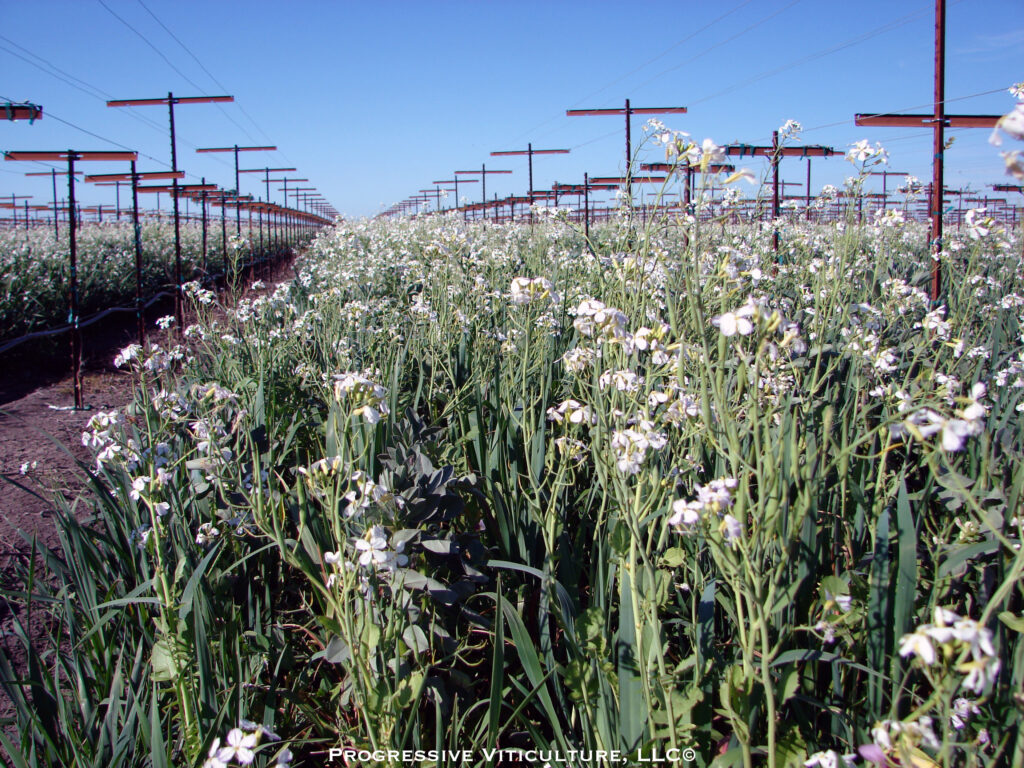
Fig. 5. Cover crops are important components of optimized root zone management. (Photo source: Progressive Viticulture©)
In the vine row, liquid organic amendments applied through drip irrigation provide short-term benefits for roots and microbes in root zones under emitters. At the same time, long-term benefits for drip zones are possible with repeated applications of mineral amendments through drip application. During the growing season, strategically apply supplemental mineral nutrients as fertilizers to ensure an adequate supply in proportion to vine needs.
To Summarize
Maintaining a favorable root zone is the primary goal of vineyard soil management. Root function is the result of the interconnections between three soil attributes. They are soil tilth, available water capacity, and fertility. Astute vineyard root zone management involves an array of actions and inputs to optimize these attributes.
A version of this article was originally published in the Mid Valley Agricultural Services October 2013 newsletter and was updated for the blog post.
Further Reading
Bohn, HL, McNeal, BL, and O’Connor, GA. Soil chemistry. John Wiley and Sons, New York. 1979.
Cass, A. Effects of soil physical characteristics on mineral nutrient availability, movement and uptake. Proceedings of the Soil Environment and Mineral Nutrition Symposium. Christensen, LP, Smart, DR (ed.). Amer. Soc. Enol. Vitic. pp. 3-11. 2005.
Grant, S. Root zones and rhizospheres: considering the above and below ground grapevine. Wine Business Monthly. February, 2019. 154-158.
Grant, S. NRCS soil survey information important to vineyards. Lodi Winegrape Commission Coffee Shop. (www.lodigrowers.com). January 20, 2016.
Grant, S. Evaluating vineyard soils in trenches. Lodi Winegrape Commission Coffee Shop. (www.lodigrowers.com). February 17, 2016.
Grant, S. Soil texture and vineyard management. Lodi Winegrape Commission Coffee Shop. (www.lodigrowers.com). December 14, 2020.
Grant, S. Comprehensive vineyard water management. Lodi Winegrape Commission Coffee Shop. (www.lodigrowers.com). August 18, 2015.
Grant, S. Soil moisture monitoring. Lodi Winegrape Commission Coffee Shop. (www.lodigrowers.com). April 8, 2014.
Grant, S. Maximizing cover crop benefits through selection and management. Lodi Winegrape Commission Coffee Shop. (www.lodigrowers.com). October 12, 2015.
Grant, S. Managing soils with adverse chemical characteristics. American Vineyard. March, 1997. 6(3): 6-11.
Grant, S. Balanced soil fertility management in wine grape vineyards. Practical Winery and Vineyard. May/June 2002. 24 (1): 7-24.
Grant, S. Managing vineyard mineral nutrient efficiency beyond the 4 R’s. Wines and Vines. April, 2016. pp. 77-78.
Grant, S. The seasonality of vineyard mineral nutrient management. Lodi Winegrape Commission Coffee Shop. (www.lodigrowers.com). May 24, 2021.
Hillel, D. Introduction to soil physics. Academic Press, New York. 1982.
Keller, M. The science of grapevines. Academic Press, Burlington, MA. 2010.
Marschner, H. Mineral nutrition of higher plants. 2nd Ed. Academic Press, London. 1995.
Nicholas, P. Soil, irrigation, and nutrition. South Australia Research and Development Institute. 2004.
Soil Science Society of America. Glossary of soil terms. Madison, WI. 1997.
Tisdale, SL, Nelson, WL, and Beaton, JD. Soil fertility and fertilizers. 4th Ed. Macmillan Publishing Company, New York. 1985.
Have something interesting to say? Consider writing a guest blog article!
To subscribe to the Coffee Shop Blog, send an email to stephanie@lodiwine.com with the subject “blog subscribe.”
To join the Lodi Growers email list, send an email to stephanie@lodiwine.com with the subject “grower email subscribe.”
To receive Lodi Grower news and event promotions by mail, send your contact information to stephanie@lodiwine.com or call 209.367.4727.
For more information on the wines of Lodi, visit the Lodi Winegrape Commission’s consumer website, lodiwine.com.
For more information on the LODI RULES Sustainable Winegrowing Program, visit lodigrowers.com/standards or lodirules.org.


